does eating the five pungent roots it onion, garlic and the like decrease the effectiveness of mantra and sadhana. Does acting meat do that as well….
Finally, a section for you to clarify your Dharma questions with Kechara’s esteemed pastors. Just post your question below and one of our pastors will provide you with an answer.
Note: This section of H.E. Tsem Rinpoche’s blog is meant for Dharma questions or questions related to Kechara and our lineage. If the question is not relevant or out of our scope, we will respectfully request you to seek an answer on a more relevant platform. Before posting your question, we would also like to suggest that you look through some of the older posts (or do a search on this blog) before you post a question as your question may have been already answered in an older post.
Dear Pastor,
Why do we still need to hold memorial prayers such as Jangchub our deceased loved ones after years of their passing? Tibetan Buddhism explained that normally a deceased person will take rebirth after 49 days after their passing,
And some hard core buddhists say we do not burn things offerings as what the Taoists do, but we Tibetan buddhist also have fire puja right ?
Thank you for your time and effort in reading and answering the above.
In some translations/transliterations of the Heart Sutra, the mantra at the end is either written "TADYATHA GATE GATE PARAGATE PARASAMGATE BODHI SOHA or written as "TADYATHA: (OM) GATE GATE PARAGATE PARASAMGATE BODHI SOHA. My question is why is "Om" omitted or added to the mantra? Is there a reason behind this, and would it apply that reasoning to other sutra mantras like the one from the 29 chapter version of the Golden light sutra? NAMO RATNA TRAYAYA TADYATHA/ KUTI KUTINI/ IMIRITO/ KOSHANI IMIRINI IRI SVAHA? Would it be incorrect to add Om into that mantra?
My question pertains to how a Buddhist should deal with religious solicitation? Such as people coming to your door knocking, and trying to sell their religion. I hate to be rude in any way and I am sure they mean well, but I really don't agree with people coming to your home unannounced and using various conversion tactics. How best should someone respond?
I have been diagnosed with PTSD from being sexually and physically abused as a child. I am in my mid-twenties and unable to work, go to school, or live any semblance of a normal life. I have undergone extreme treatments such as electroconvulsive treatment (70 in 2 years). I took refuge at 16 and became a buddhist and vegetarian. I am poor, but not homeless. I do not have many resources to practice Dharma, aside from my mala. I would like to further my practice to relieve the suffering of others, so no one has to go through what I am going through. What should I do, spiritually, to dedicate my suffering so that it goes toward the better good?
Please guide me. My boyfriends mother is very controlling and dominant person. we are about to get married in few years as we are reaching age .i love him but i am very scared of his mother. She does not like me i feel. Everytime my boyfriend introduces me to his mother she tries to ignore my presence. I have helped her son, my boyfriend a lot in his life and he told her many times how helpful i am but all she says is forget about her and concentrate on your life.it really hurts me i have cried a lot because of her. My boyfriend is very scared of his mother and never speaks up nor stands up for me,..
Hello please help me .
My situation is i am married now but i keep having dreams and thoughts of my ex lover, my first love. We separated many years ago when he left me because he had to go abroad to USA . Everytime i listen to songs or see something it reminds me of him. I also know that he thinks of me too…..i have a strong feeling. It has been ten years now but i still think he was my soulmate..Sometimes i wish my husband was just like him or wish i was still in relationship with my ex boyfriend. I feel very guilty because i have these thoughts even when i have a great husband but my first loves thoughts and time we spent together i cant forget it….
What should i do..thank you
Sorry about the link not working. They can be found at dharmawheel.net and then looked under Tibetan Buddhism and then under topics which are under all the other lineage topics. Since this is recent, the title "Crazy Scandal somewhat related to Gelug hitting Taiwan" should come up. But anyway, here are the sources in that case:
https://ladakh2017blog.wordpress.com/2017/08/12/mary-jin-gebis/
https://maisonneuve.org/article/2013/06/18/when-monks-come-town/
https://ladakh2017blog.wordpress.com/2017/08/14/bw-dorje-shugden/
http://www.blisswisdom.org/statement/1854-1006
https://ladakh2017blog.wordpress.com/2017/07/24/dalai-lama-speaks-to-chinese-devotees-about-bliss-and-wisdom/
Hi, although this is not a question, I would like to bring awareness towards a particular cult in China and Taiwan that has been having scandals with their leader, Mary Jin. The cult has been defaming the Dalai Lama and has begun supporting Shugden here even though that's not really bad. However, I would like to bring attention so they may not begin corrupting the Buddhists here. Even though I used a dharmawheel website, it has links to its sources:
https://dharmawheel.net/viewtopic.php?f=40
Dear Sir,
I was born and raised as a buddhist but lost my faith over the course of life after witnessing much injustice and suffering. I work as a doctor and while I have helped colleagues and patients tirelessly, the politics of my workplace go beyond unfair and intolerable. I am never political minded and many others had easier time by doing less work but focus on the politics.
I returned to Buddhism Vihara in UK only disappointed when told that there is nothing I can do except worshiping all monks as the ear and mouth of Buddha. This is followed experience of temples in Singapore and New Zealand explicitly coerce monetary contribution for sanghara release without nourishment to my suffering soul.
The only good advice I receive is to meditate and focus on cleansing my mind so that I have the mental resilience to face superiors at work who can stop at nothing to end my career or at least my my professional life a misery.
Can you tell me is Buddha showing a way into Nirvana and therefore could not help individually or does he has Compassion and Enlightenment to the extent he can hear me in meditation and can stay with through this difficult journey in life?
Thank you.
Please help me,
when I was 12 I got sent to live with my father in another state who I had not seen since I was an infant. I was miserable being away from my grandmother who I lived with before being sent away because my mother was an alcoholic and she couldn't care for me. My grandmother was in poor health and constantly worried about the crazy things my mom would do when she was drunk which was literally everyday. I loved and still love my grandmother more than anything on earth and I was incredibly depressed not being there for her. It became unbearable and one night I had a panic attack from worry and sadness and I said aloud in tears "please I will seek my soul to Satan if I can go back home to live with my grandmother again" within DAYS my grandmother called me and told me that my mom had died and that I would be on the next airplane home to be at her funeral. Also I spoke to my mother on the phone a day or two before she died and I asked her to please bring me home and her exact words were "I will do something to bring you home" I knew she was drunk and usually when she was drunk I would yell at her about it but for some reason I didn't do it and that was the last time I ever spoke to her. Did I sell my soul? I don't want to go to hell please help me.
Please support us so that we can continue to bring you more Dharma:
If you are in the United States, please note that your offerings and contributions are tax deductible. ~ the tsemrinpoche.com blog team
Meet the Pastors

Serving the community. Tirelessly
Combining the responsibilities of the ordained and the appearance of a layperson, pastors are the connection between the sangha and the everyday practitioner. They are ordinary people who have taken an extraordinary step in dedicating their lives towards sharing the Buddhist tradition. As laypeople holding vows, pastors will make the Dharma accessible to more people, giving them guidance and sharing knowledge. The pastors are usually present at Kechara House and available for consultation anytime. For more information, contact house@kechara.com.
Pastor Chia (sangha to be)

As a pastor, Chia will dedicate his life to befitting others through spreading the works of Tsem Rinpoche and Dharma to many people, through the use of pujas, rituals, counseling and sharing of his knowledge.
Ordained as a Pastor in 2011, Chia Song Peng has had a rich and varied Dharma career. He has held a core position with the Kechara Paradise retail outlets, served as a personal attendant to Tsem Rinpoche, embarked on various pilgrimages and received initiations into higher yoga tantric practices. He is accomplished in many pujas and has a deep understanding of the Dharma.
As a pastor, Chia has dedicated his life to befitting others through spreading the works of Tsem Rinpoche and Dharma to many people, through the use of pujas, rituals, counseling and sharing of his knowledge.
When Chia first met Tsem Rinpoche, he was asked if he wanted to become a monk, however even though this was his aspiration he informed Tsem Rinpoche that he would do so at a later date. For Chia, as he has is already in the Dharma full-time, it would be best if he became ordained. Tsem Rinpoche has reminded Chia from time to time to work towards becoming a monk and he promised that he would do so in the future.
Kechara began from nothing to become a growing Dharma organisation with major projects such as Kechara Forest Retreat, so Chia thinks that this is the perfect time to become ordained as a monk. Recently Tsem Rinpoche asked Chia again if he would like to be ordained, this time Chia said yes.
Pastor Khong Jean Ai (sangha to be)

Jean Ai wishes to become a vessel that holds the teachings of Lama Tsongkhapa to benefit future generations, inspiring others to live by the Buddha’s teachings.
Jean Ai met His Eminence Tsem Rinpoche as a young child and through her parents' involvement with Kechara over the years, she has never known a life without His Eminence. Jean Ai was a regular volunteer of Tsem Ladrang during her childhood and teenage years. After graduating with a BSc (Hons) in Psychology from the University of Warwick in the UK and working at the London Probation Service, she returned to Kuala Lumpur to join Tsem Ladrang's e-division. There she managed kechara.com, responsible for the weekly Kechara e-newsletter, including content generation and editing. Since then she has joined His Eminence Tsem Rinpoche’s writing team, responsible for executing Rinpoche’s personal instructions and managing his correspondence.
Having visited a nunnery in India in 2004, Jean Ai remembers noticing how happy and purposeful everyone was. She had a feeling of familiarity and the sight of the robes comforted her. Immediately, Jean Ai messaged her mother who told her to ask Rinpoche’s advice. Rinpoche told her to complete her secular education so that when she taught the Dharma her words would carry the credibility and weight of a university degree, something she completed with the motivation that some day she wanted to become a nun.
Through her ordination as a nun, Jean Ai wishes to become a vessel that holds the teachings of Lama Tsongkhapa to benefit future generations, inspiring others to live by the Buddha’s teachings. Through this she hopes to repay the kindness of her parents and her Guru. Above all she wants to abide in a state free of suffering, and she wants this for others as well.
Pastor Shin Tan (sangha to be)

For Shin, this is a great step forward to being fully committed to the cause of others and repaying others’ kindness through sharing the Dharma with others.
Before joining Kechara, Shin worked as a lecturer and provider of content and e-learning content solutions for various start-ups. Whilst providing training to educators teaching students in English for Specific Purposes (ESP) at various colleges, she was invited to attend a Dharma talk given by His Eminence Tsem Rinpoche at Kechara House. This event rekindled her interest in Tibetan Buddhism, as she recalled the joy of accompanying her parents to teachings as a teenager.
Joining Kechara Media & Publications in 2006 as a volunteer, Shin assumed a full time position there as a Marketing Executive, with the aim of making His Eminence Tsem Rinpoche’s teachings available to more people around the world. Shin is now a member of the Tsem Ladrang Team, who takes care of His Eminence Tsem Rinpoche’s secular matters, enabling Rinpoche to focus on teaching the holy Dharma.
Shin states that when she decided to join Kechara full time, she had already decided to be of some benefit to others and spend the rest of her life doing only that. Working closely with His Eminence Tsem Rinpoche, seeing his tireless effort in helping others and spreading the Buddhadharma through the Gaden tradition despite tremendous challenges has made her realise that the next logical step is to become ordained as she has the opportune conditions to study with her Guru. For Shin this is also a great step forward to being fully committed to the cause of others and repaying others’ kindness through sharing the Dharma with others.
Pastor Adeline Woon (sangha to be)

Since finding her spiritual home here in Kechara, Adeline has made dharma work her life’s mission and wishes to dedicate herself fully towards the benefit of others.
Adeline stumbled across His Eminence Tsem Rinpoche's blog towards the end of 2010 and has been following his blog and Facebook page ever since. Since graduating from Dharma Drum Buddhist College Taiwan with a Masters of Arts in Religious Studies in July 2012, she returned to Malaysia and joined Kechara as a Senior Education Executive. Adeline was attracted by His Eminence’s straightforwardness and impressed at Kechara's growth under his guidance. To Adeline, His Eminence is someone who walks the talk, keeps his promises and sincerely cares for others displaying an excellent example of guru devotion, qualities that she seeks to develop herself.
Since finding her spiritual home here in Kechara, Adeline has made dharma work her life’s mission. It was in May 2013 that she officially requested His Eminence for ordination as a nun to dedicate her life fully for the dharma. According to Adeline, become ordained means that she is being true to her calling to live according to the dharma and be of benefit to others.
This however can only be achieved by meeting and studying under her root Guru. Adeline has been fortunate enough to have met with hers - His Eminence Tsem Rinpoche.
Pastor Niral Patel (sangha to be)

It is Niral’s motivation for full ordination to better himself, learn the teachings of our lineage in order to preserve them for future generations. He wishes to benefit others, just as he has benefited and is still benefiting from Tsem Rinpoche’s explanation of the Dharma.
Niral was born and raised in the UK, having graduated with a BA in Anthropology, he was working as a Financial Administrator for a Serviced Apartment & Hotel company as well as a Management Services company before stumbling across His Eminence Tsem Rinpoche’s Youtube channel, entirelyby accident. It was through His Eminence Tsem Rinpoche’s teachings that he began to understand the importance of practicing the Dharma, in order to benefit himself and others around him.
Having been in contact with one of Tsem Rinpoche’s long time students in the UK, he was encouraged to visit Kechara in late 2012 for a 10 day visit. At the end of the visit Tsem Rinpoche requested Niral to come to work at Kechara, to which he agreed.
Niral moved to Malaysia in February 2013 to work as an education coordinator at Kechara House, assisting the Education Division in the creation and implementation of the new education syllabus, teaching teenagers during the Kechara Sunday Dharma School. Ever since meeting Tsem Rinpoche, he has always been encouraged by Tsem Rinpoche to do more Dharma work and strive to better himself. It is with that in mind, that Niral has requested monastic ordination.
It is Niral’s motivation for full ordination to better himself, learn the teachings of our lineage in order to preserve them for future generations. He wishes to benefit others, just as he has benefited and is still benefiting from Tsem Rinpoche’s explanation of the Dharma.
Pastor Tan Gim Lee (sangha to be)

Gim Lee’s main focus is to guide and help anyone who steps through Kechara’s doors through Dharma sharing, counselling, performing pujas and other Buddhist services. She wishes to repay Rinpoche’s kindness by spreading Lama Tsongkhapa’s holy teachings and inspiring others on the spiritual path.
She discovered Kechara by chance in 2006 and started to participate Kechara's activities almost immediately especially the retreat to collect 10 million Migtsema recitations. In April 2006, when Gim Lee met H.E. Tsem Rinpoche and first listened to his teachings, she wept uncontrollably. Though she could not understand it at the time, she had finally found her perfect teacher. She is especially touched by Tsem Rinpoche's compassionate method of teaching by setting his own examples.
Having joined as a staff of Kechara House responsible for housekeeping in 2009, Gim Lee is now one of Kechara House's Front Desk Managers predominantly based in the retreat centre in Bentong, Pahang. She also teaches the Sunday Dharma Class and moderates Dharma discussions on Tsem Rinpoche's blog chat.
The many teachings she has received from Tsem Rinpoche have changed her priorities in life. She found answers to her questions about the purpose of life, and she has realised that the way to overcome the sufferings of pain and anger is by following the path of compassion and wisdom as taught by Lord Buddha. These realisations have led to her request to be ordained as a Sangha member.
As pastor now, and later as a Buddhist nun, Gim Lee's main focus is to guide and help anyone who steps through Kechara's doors through Dharma sharing, counselling, performing pujas and other Buddhist services. She wishes to repay Rinpoche's kindness by spreading Lama Tsongkhapa's holy teachings and inspiring others on the spiritual path.
Pastor Loh Seng Piow (sangha to be)

Loh Seng Piow developed a strong wish to help Rinpoche in spreading the Dharma to the world. With that determination, Loh Seng Piow chose not to pursue his PhD degree in Cambridge University (for which he had been offered a place), resigned from his research job, and joined Tsem Rinpoche as full-time Dharma worker, and has never looked back since.
Back in 2001, Loh Seng Piow had no inkling of just how involved in Dharma he would become. As a Masters degree-holder in Engineering, Loh Seng Piow was working as a research engineer in Singapore when he met His Eminence Tsem Rinpoche. Rinpoche’s talk left a strong impression on him and after a few encounters with Rinpoche, Loh Seng Piow started developing websites for Rinpoche and Kechara.
Loh Seng Piow was trained in science, but soon realised that there were many questions that science could not answer. At the same time, he also felt that science and technology are not the solution to human problems, as humans are much better off compared to thousands years ago, yet the problems in this world are still the same, if not more, and we do not seem to be happier than our ancestors.
Loh Seng Piow soon realised that the Dharma is the ultimate solution to human problems, and that the methods used by His Eminence Tsem Rinpoche are very suitable for this modern era. Loh Seng Piow developed a strong wish to help Rinpoche in spreading the Dharma to the world. With that determination, Loh Seng Piow chose not to pursue his PhD degree in Cambridge University (for which he had been offered a place), resigned from his research job, and joined Tsem Rinpoche as full-time Dharma worker, and has never looked back since.
Meeting Rinpoche was a very refreshing experience for Loh Seng Piow, as he never knew Dharma could be so unconventional yet maintain its essence. As Rinpoche’s personal attendant, Loh Seng Piow has had many incredible moments with Rinpoche and considers himself extremely fortunate because he sees real Dharma in action, both on and off the throne. It challenges him to practice Dharma 24/7. In this way, Rinpoche has blown away his old and persistent way of thinking, which was very much focused on the outer rituals of Dharma.
Having seen that Tsem Rinpoche truly embodies what he teaches, Loh Seng Piow is convinced beyond doubt that it is possible to develop our minds to a higher state, and ultimately achieving enlightenment. All these factors have propelled Loh Seng Piow to take a step further in his Dharma career to become ordained as a pastor in order to be even more effective in sharing and disseminating the Dharma to benefit others.
Pastor Yek Yee

Naturally an introvert, Yek Yee has transformed what was once her weakness into her strength; making what was once impossible now eminently possible.
Independence was forced upon Kok Yek Yee from the tender age of nine, when she had to juggle between work and school to make ends meet. Always the introvert, Yek Yee had few friends and had difficulty expressing herself. So it was unexpected when she chose a career in journalism.
Yek Yee excelled as an award-winning reporter with Guang Ming Daily and Nanyang Siang Pau. Her articles garnered her a fanbase, and in writing, she found an outlet for the thoughts and feelings that she could not verbalise. However, despite her success, Yek Yee was not satisfied. Temporary happiness was not what she was looking for – success, money, relationships, or fame was not the key.
In her search for happiness, Yek Yee met H.E. Tsem Tulku Rinpoche, who told her “don’t retaliate with your speech, but use your power of writing to express yourself”. This led her to join Kechara Media & Publications as a writer; subsequently she was appointed Senior Editor as well as a Liaison to His Eminence.
Yek Yee now holds a core role in Kechara Care, giving advice, tours, counseling and teachings to whoever walks through their doors. Through courage and determination, she has transformed what was once her weakness into her strength; making what was once impossible now eminently possible.
As a Pastor, her patience and open-mindedness developed through her journey with Kechara will bring comfort and solace, and her new-found ability to nurture and teach others will bring hope to many.
Pastor Lanse Chiah

Having been a Pastor for a year, Lanse wishes to continue with her integral duties by renewing her vows again.
Lanse graduated with a Bachelor of Medicine and Bachelor of Surgery (MBBS) from Jinan University in Guangzhou, China in 1999 and became a part-time lecturer for several years, teaching western medicine in a Traditional Chinese medical college in Kuala Lumpur.
For a long time, Lanse remained an atheist, subconsciously searching for a spiritual guru as she sought answers to questions she harboured in her mind, questions that had led her into a state of depression during her time at university. As such, she would often read philosophical books in her search for answers.
Lanse first came to know of Kechara in 2007, through her friend of over 10 years, Pastor Yek Yee. She was surprised to see a complete transformation in Pastor Yek Yee, whom she had always known as a non-spiritual person. The first book by Kechara that Lanse chanced upon was the Chinese version of Be Greedy. Naturally, Lanse was skeptical at first, thus she read the book in an attempt to find mistakes with the philosophy. However, she couldn’t find any and was left impressed by how logical the explanations in the book were.
In March 2009, Lanse joined Kechara Media & Publications (KMP) part-time to carry out Chinese translation and help with transcription. The following year, she contemplated upon whether to pursue a full-time medical or a Dharma career, finally deciding on the latter. Lanse came to realise that, although both careers share the same motivation of easing people’s sufferings, she felt that her work in Dharma could lead to a greater contribution for the sake of all sentient beings in a deeper, spiritual sense.
Having been a Pastor for a year, Lanse wishes to continue with her integral duties by renewing her vows again.
Pastor Han Nee

It was not until she witnessed how Rinpoche brought peace and comfort to her dying mother, that she realised she also wanted to touch others with the Dharma.
Lim Han Nee, a mother of two, is a retired secondary school principal. She retired in December 2000 after a 30-year career in education. She obtained her Master’s Degree in Education at Leicester University in the UK, at the end of 2001.
After gaining her master’s degree, Han Nee considered further options of embarking on a doctorate in education or spending her years in retirement, travelling and visiting family. At the same time, she was also in search of her spiritual path. She had begun exploring Theravadan and Chinese Mahayana Buddhism for answers to questions she had.
In December 2004, Han Nee attended a teaching retreat on the topic of the Lamrim and White Tara held by His Eminence Gelek Rinpoche. As the retreat proceeded, she found her questions were being answered. Then in June 2005, Han Nee was introduced to Kechara by her sister, where she met her spiritual guide, His Eminence Tsem Rinpoche, who has recently told her that she must go all the way in the Dharma for the benefit of others.
Han Nee had been a school guidance counsellor for nearly twenty years. However, it was not until she witnessed how Rinpoche brought peace and comfort to her dying mother, that she realised she also wanted to touch others with the Dharma.
A member of Kechara’s Puja Team, who conduct sponsored pujas in Shabten Khang, Han Nee is also a member of the Education Division with the portfolio of Content Development. Apart from this, Han Nee is also a member of the weekly Kechara Chat Time team.
Pastor David Lai

In 2014, with a sincere wish to benefit others, David decided to be ordained as a Buddhist pastor to continue serving the spiritual needs of the organisation.
David Lai has been a student of His Eminence Tsem Rinpoche for over a decade now and was one of the founding members of Kechara. He joined Kechara as a full time staff in 2005 and has been working in various departments beginning with the Kechara Paradise outlets.
Right from the beginning, David had been advised by His Eminence to go into writing. Overcoming various hurdles, David finally began his literary career with the publication of his first book and autobiography, There’s No Way But Up in 2009. The book charts his spiritual journey from his childhood and culminates in the meeting with His Eminence.
The positive feedback from this book led him to write various other publications like Vajrayogini and Other Power Places in Nepal – a pilgrim’s guide of Nepal, Tales My Lama Told Me – a book on short stories and Conversations in Love – a book on relationships. These books continue to inspire and bring people onto the Dharma.
Besides writing, David has found his passion in sharing the Dharma since his earlier days working in the Kechara Paradise outlets. Over the years, David has received innumerable teachings from His Eminence, ranging from public teachings to personal instructions and advice. He is known to passionately share these teachings whenever he can and to whomever he meets. In 2014, with a sincere wish to benefit others, David decided to be ordained as a Buddhist pastor to continue serving the spiritual needs of the organisation.
Pastor Henry Ooi

After following Rinpoche as a Dharma student for all these years, learning and practicing the Dharma, Henry knows the importance of the pastors’ role in Kechara founded by Rinpoche. He wants to become a pastor to serve Rinpoche, to serve Kechara, and to serve the public.
Born in 1952 in Penang, Henry moved to Kuala Lumpur in search of work after he finished his Form Five studies in 1969. He worked at different types of jobs and it was when he was jobless in 1997/8 that he met His Eminence Tsem Rinpoche at the house of his cousin, Ruby (now Dato’ Ruby Khong), when Rinpoche was giving a dharma teaching. At that teaching Henry was awed by how Rinpoche taught Dharma with simple yet profound explanations.
With the kind guidance, teachings and Dharma practices by Rinpoche including instruction to engage in their first spiritual retreat, Henry and his wife Angel started a small business that soon became profitable. A few years later after Kechara House Buddhist Association was founded, Rinpoche started to enrol students as liaisons and that was when Henry and Dato’ Ruby offered themselves. Later more students were elected as liaisons that saw the birth of Liaisons Council. The Liaisons Council is now known as the Board of Directors of which Henry is one of its members.
Currently Henry is the Project Director, overseeing the construction and completion of projects in the Kechara Forest Retreat. Prior to this appointment he was the Head of Department in Kechara Paradise retail outlets of which he served for about ten years. He still remains as its company director as well as director for most of the companies within Kechara. He served one term as vice president of Kechara House Buddhist Association from 2012 to 2103.
After following Rinpoche as a Dharma student for all these years, learning and practicing the Dharma, Henry knows the importance of the pastors’ role in Kechara founded by Rinpoche. He wants to become a pastor to serve Rinpoche, to serve Kechara, and to serve the public. As he aspires to be a monk as he grows older, being a pastor of Kechara will pave the way for his aspiration. Henry believes that as one gets older in life, one should have already prepared for the imminent, death. And what a beautiful death it will be, to die in Kechara Forest Retreat in a monk’s robes. This is the kind of death that Henry wants. But before the imminent death happens, Henry wants to continue working in Kechara Forest Retreat, serving the community and whoever comes into it in whatever way he can. And when he is not physically anymore to serve others, he will request instructions from Rinpoche to enter into retreats in Kechara Forest Retreat.
Pastor Patsy Gooi

All that Patsy wants now is to spend the rest of her life doing dharma work, dharma practices and being of benefit to others.
Formerly a full time housewife with plenty of free time, Patsy had the great fortune to visit Gaden Monastery and meet H.E. Tsem Rinpoche almost twenty years ago. That one week stay in the monastery changed her view of life. Prior to that, she had no spiritual inclinations but meeting Rinpoche stirred something inside her, and she realised that there was more to life than just eating, sleeping, shopping and having fun. Rinpoche’s approach to dharma was logical and practical but most importantly, he stressed that we should always focus out and work towards benefitting others. Rinpoche made dharma easy to understand and his advice was and still is, to “change inwardly, not outwardly.”
In 2009, after years of practicing and applying what she had learned from Rinpoche’s teachings, Patsy decided to set up a Kechara retail outlet in Penang to share the dharma with others. She knew that Rinpoche’s teachings were very applicable to the people of our time and that his activities would benefit others just as they had benefited her. She also wanted to repay the kindness of her Guru who had constantly helped and guided her. Today, Kechara Paradise Penang is not just a dharma shop but also organises puja sessions, animal liberation and dharma talks.
In 2010, again with Rinpoche’s blessings, Patsy set up the Kechara Soup Kitchen Activity Center in Penang. Saddened to see the plight of the homeless and urban poor on the streets, Patsy decided to practice “compassion through action” as taught by Rinpoche in the most active way she knows. Today, together with her team of volunteers, Patsy feeds the homeless and urban poor four times a week and provides basic food provisions to many hardcore poor families on a monthly basis.
All that Patsy wants now is to spend the rest of her life doing dharma work and dharma practices, and that she may be of benefit to others.
Pastor Albert Ratchaga

In 2008, Albert Ratchaga began working as a part timer in Kechara Paradise, but as he learned more about the works of Rinpoche and Kechara, Rinpoche’s kindness and compassion touched him deeply. He realised that his work gave his life more meaning and decided to join Kechara full time.
Through his work as a sales executive, Albert was able learn more Dharma from Rinpoche's teachings and use this wisdom to assist those who entered his store to overcome their problems, thus improving their lives.
Albert soon developed a deep wish to follow in Rinpoche’s footsteps and in 2016 was ordained as a Pastor to continue benefitting and serving others.

































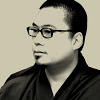














































































































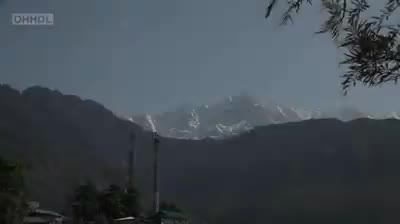
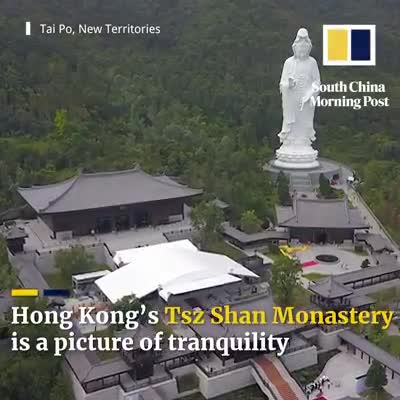

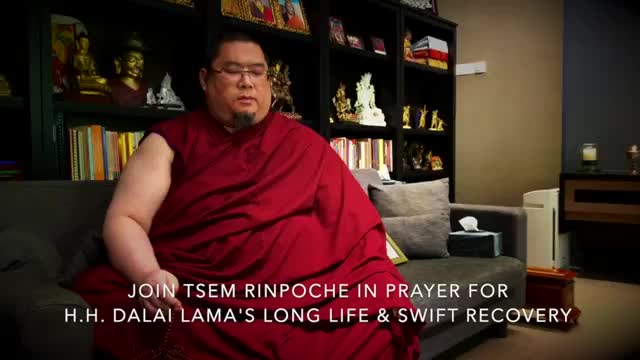

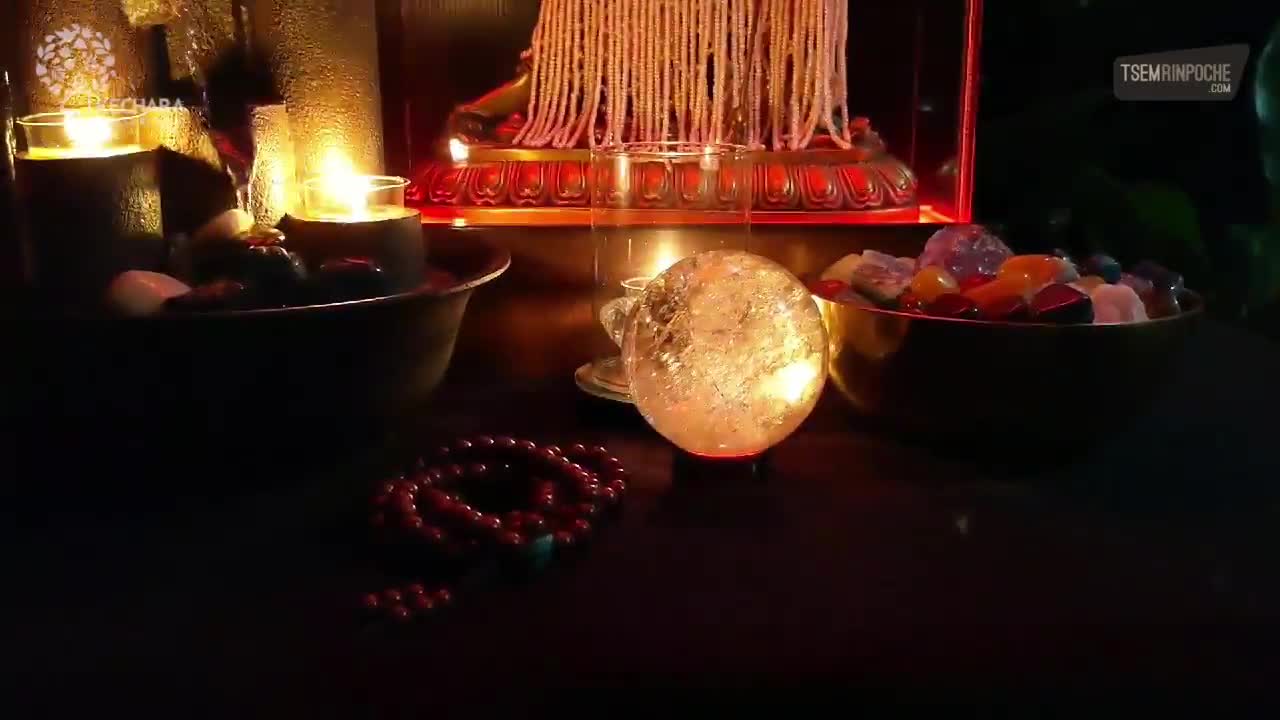

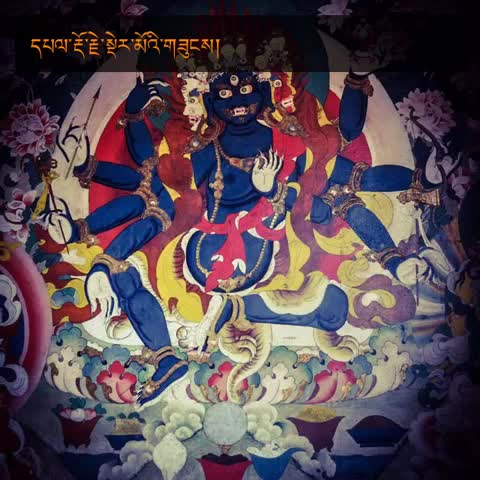
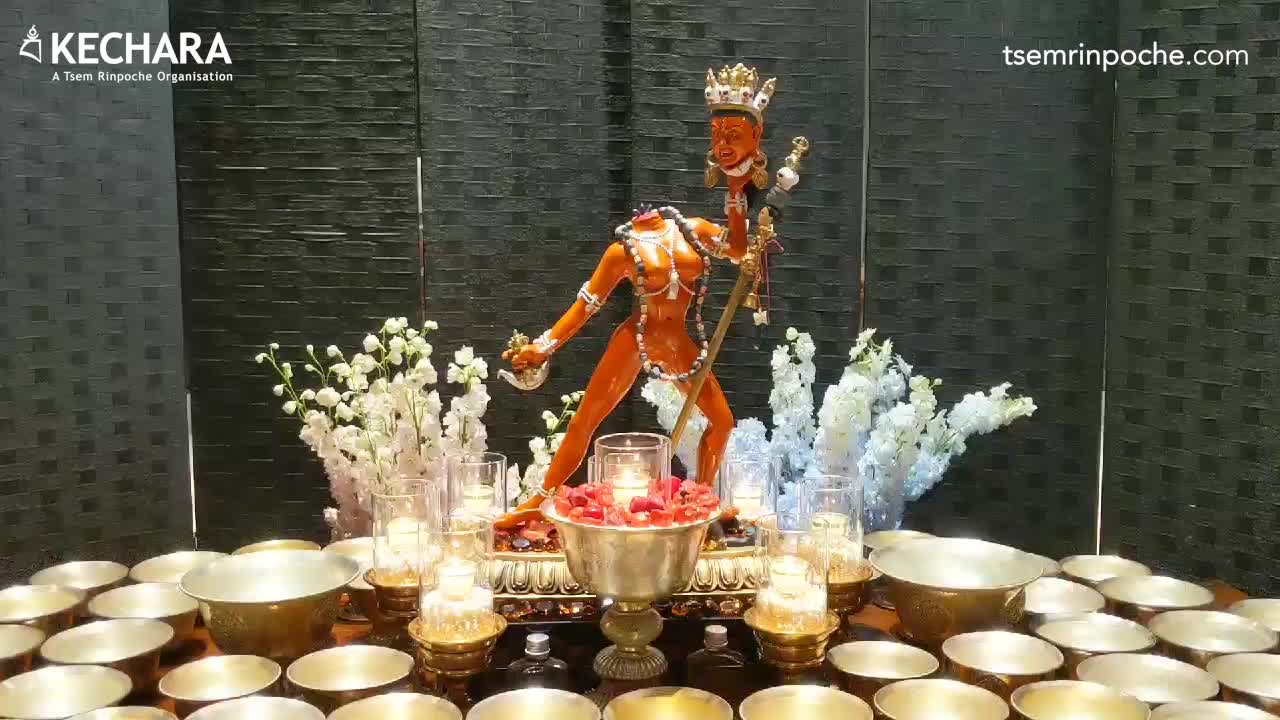





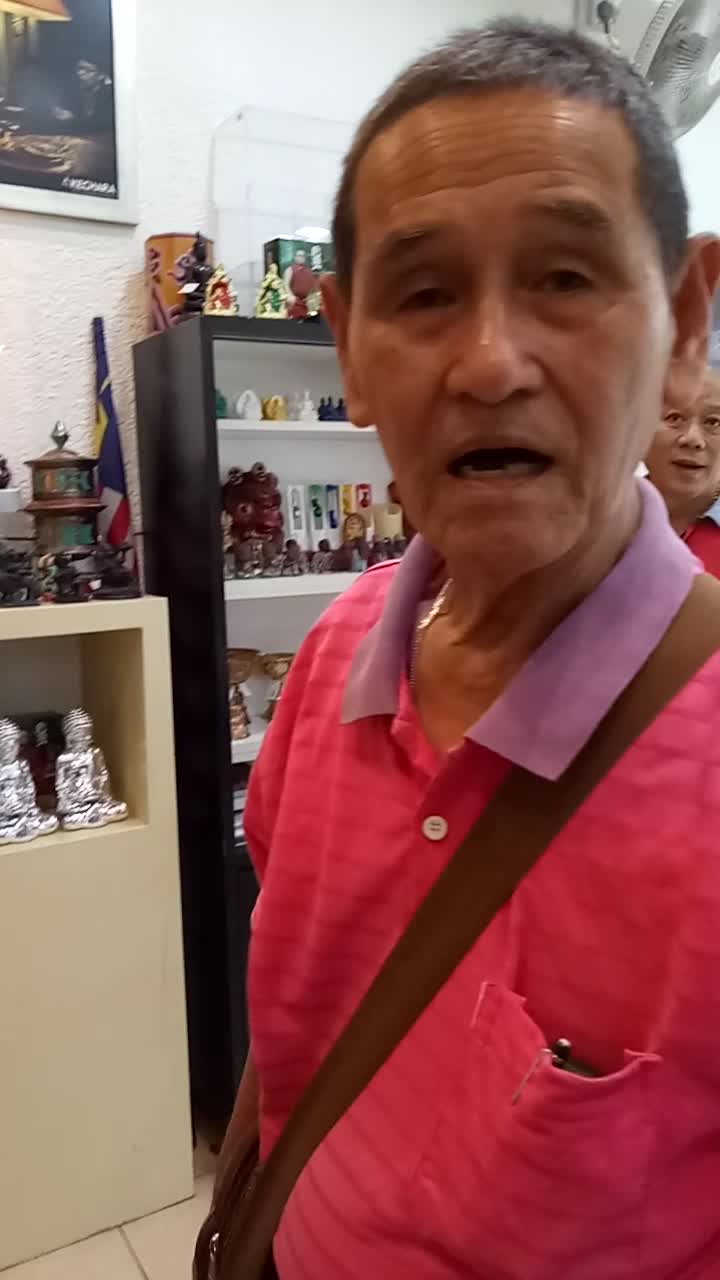







































































Dear Ling,
Thank you for your question. From a tantric Buddhist perspective our mind rides on the psychic winds within our bodies. Therefore if the psychic winds in our body are agitated our minds will be agitated, if our psychic winds are blocked, we will also have blockages in our minds. Therefore to have a clear mind, which is necessary for the higher meditational practices to be successful, the psychic winds in our body must flow freely.
For the ordinary level practitioner who does not have control over the psychic winds in the body, practitioners will engage in psychical actions or refrain from physical actions in order to give them more control over these psychic energies. One such way is to carefully control one’s diet and this will obviously involve the pungent foods that you have mentioned. Certain foods affect the psychic winds in different ways. When eaten raw these roots affect the psychic winds in a certain way which makes a person’s mind more prone to anger, and when eaten cooked they affect the mind in a way which can increase one’s desire. In fact, when we are affected too much by an emotion it can have a reverse affect. If we have too much anger for example, the psychic winds can become blocked, and this can lead to a propensity of developing illness. Both of these emotions are hindrances to meditational practices because they can distract from whatever you are concentrating on during the meditation.
In the Chinese Mahayana tradition and when in strict retreat within Tibetan Buddhism, these foods are avoided for these reasons. Also, when practicing the lower tantras, they are also avoided because a practitioner usually does not have sufficient control of the psychic winds in the body. In Highest Yoga Tantra practices, however, it is not a must to avoid these foods because it is during these practices that you develop great control of the psychic winds within the body.
For the everyday practitioner when engaged in sadhana and mantra practice, if you have a serious meditational practice then you can avoid these foods. It is a choice that you should make yourself, and not a must if you are not in retreat. In Kechara, when we engage in retreats we do avoid eating these foods, as well as other foods commonly referred to as ‘black foods’. I hope this explanation helps.
Thank you.